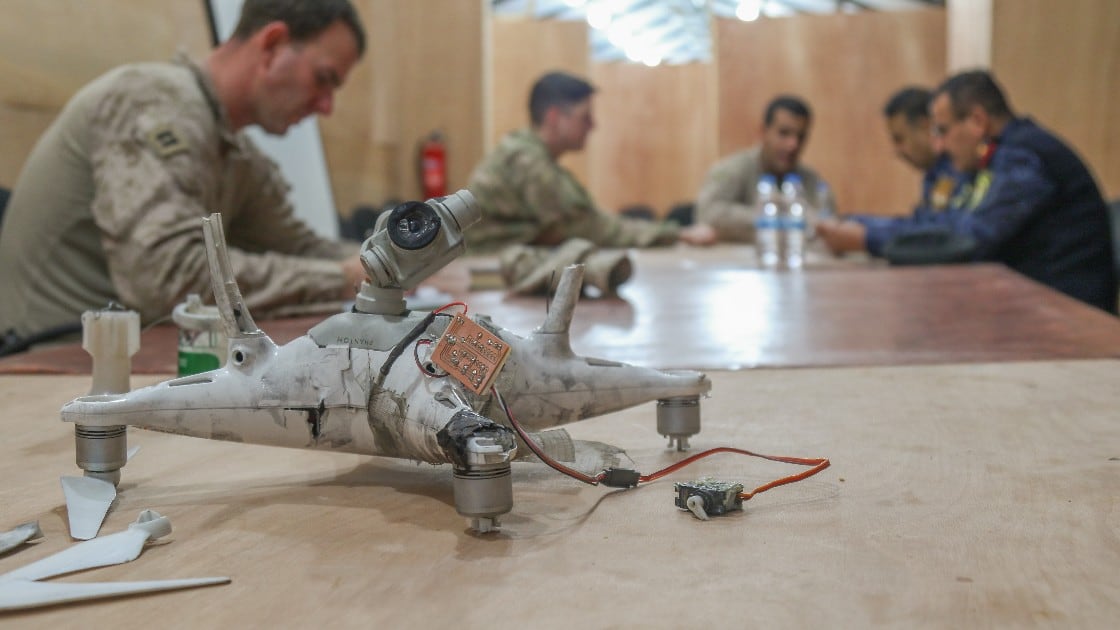Aerial technologies once viewed as hobbyist toys have triggered alarms at U.S. Central Command.
The proliferation of small, cheap drones is the “most concerning tactical development” since the rise of the improvised explosive device in Iraq, Marine Gen. Kenneth McKenzie, who helms CENTCOM, said in prepared remarks at the Middle East Institute on Monday.
The concerns are amplified by the lack of a dependable countermeasure against those drones, according to McKenzie.
“I’m not just talking about large unmanned platforms, which are the size of a conventional fighter jet that we can see and deal with by normal air defense means. I’m talking about ones you can go out and buy at Costco right now for $1,000,” McKenzie said.
Commercial drones are relatively inexpensive and easy for militant groups and criminal organizations to modify to fit their needs.
Videos from battlefields in Iraq, Syria and Ukraine have shown the potential havoc that small drones can bring to unsuspecting ground forces, including scouting for call-for-fire missions and dropping bomblets on exposed positions. Syrian fighters even found crude ISIS drone factories in areas liberated from the extremist group.
“Right now we’re on the wrong side of the cost imposition curve because this technology favors the attacker, not the defender,” McKenzie said. “But we’re working very hard to fix this and flatten the curve. We have a variety of systems in the field already.”
McKenzie added that the problem has the “direct attention” of leaders at the Pentagon. The Army, which is charged with overseeing the Defense Department’s programs to counter small drones, published a new strategy outlining the threat in January.
Most of the military’s current counter drone capabilities are electronic warfare systems. Many use lasers or microwaves to disrupt the communication link between drones and their operators.
But the counter drone strategy warns that swarms of small aircraft operating independently, facial recognition algorithms, artificial intelligence and high-speed fifth generation cell networks will challenge existing countermeasures. Swarming drones clouding an airspace could quickly overwhelm troops’ current weapons.
Long-term, the Army is pushing for a networked approach, using artificial intelligence and machine learning to find and track possible threats. The Army’s Fires Center of Excellence at Fort Sill, Oklahoma, is also expected to build a school for the joint force focused on fighting small drones by 2024.
“Those are all steps in the right direction, but it worries me because I think what we’re seeing is the emergence of a new component of warfare,” McKenzie said Monday. “Part of a system of systems, and how we work our way through this challenge will be closely watched by our competitors, and our adversaries.”
Kyle Rempfer was an editor and reporter who has covered combat operations, criminal cases, foreign military assistance and training accidents. Before entering journalism, Kyle served in U.S. Air Force Special Tactics and deployed in 2014 to Paktika Province, Afghanistan, and Baghdad, Iraq.





